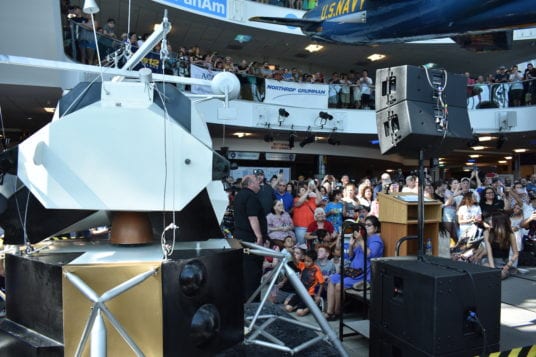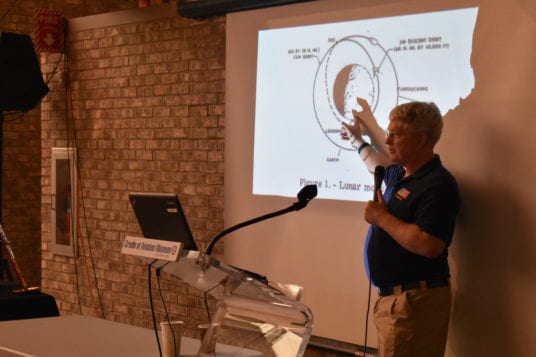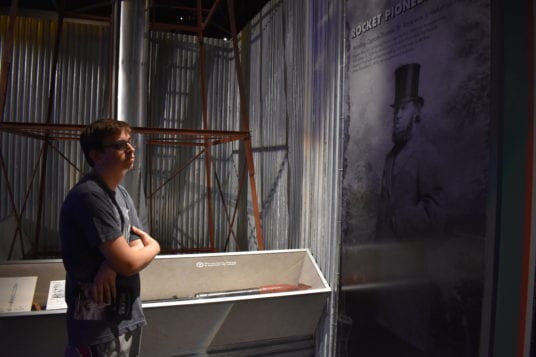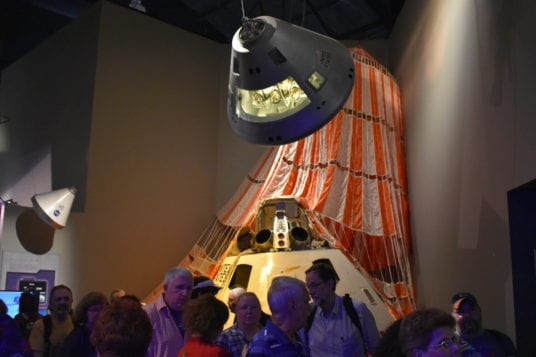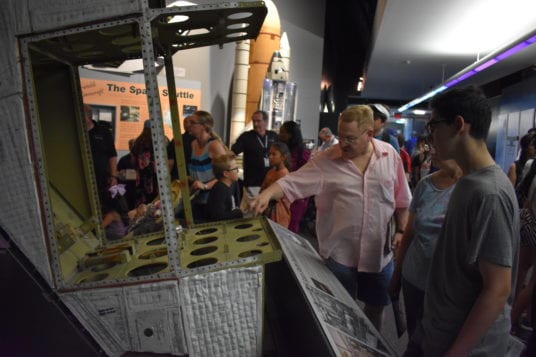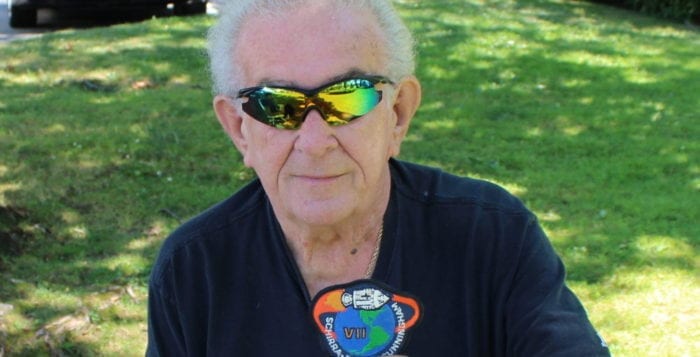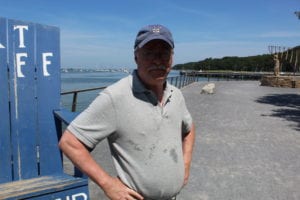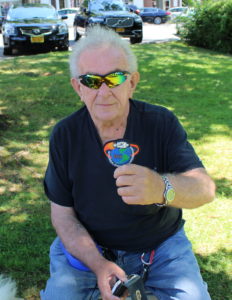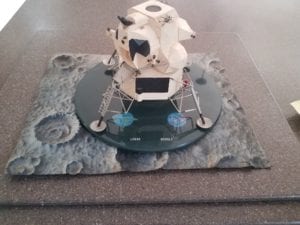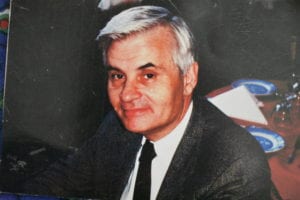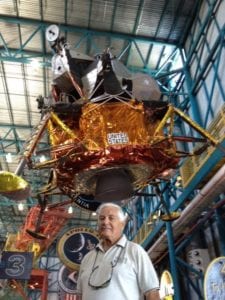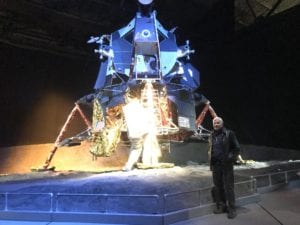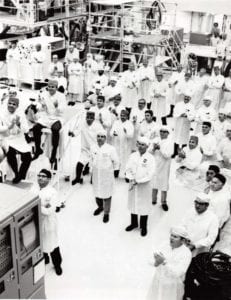July 22 was a sudden reminder of a certain day last year in September, when water ran down Main Street like a river, and parts of Port Jefferson were drowned in water.

Instead, July 22 was a moderate rain by comparison, only hit with 2.35 inches of rain, according to the National Weather Service, instead of the more-than 4 inches it received in that last major storm.
Still reeling from massive flash floods that inundated Port Jefferson village last year, those who were most impacted by the September waters said they were more prepared for the high waters this year.
Brennan Holmes, the chief of the Port Jefferson Fire Department, said they had learned from their mistakes last year, and for the first time put into practice their new flood protocols.
“Last night was a good test,” Holmes said the day after the flooding. “Although there was a lot of water, it went by real quick.”
Last year waters reached nearly 5 feet in the main firehouse, though this year the fire department moved its emergency vehicles from the department building up to the higher ends of Maple Place, but waters didn’t enter the firehouse. The department also made use of a recently converted high-water rescue vehicle, donated by the Miller Place Fire Department. That was available as well as department members in water rescue suits, according to Holmes.
In addition to dealing with the flooding, the department responded to two automatic alarms caused by lightning, three welfare checks on the businesses of Ruvo East, Old Fields Restaurant and Theatre Three, all of which had been hard hit last year. The department also assisted in removing a person from a vehicle which was situated in about a foot of water.
The fire department closed off Main Street for about an hour from around 7 p.m. to a little after 8 p.m. Holmes said this resulted in much less traffic into and out of the village, making it much safer for motorists.
“We fared much better than last September, which we’re really happy about,” the fire chief said.
Mayor Margot Garant was adamant that last year’s high of 4 inches of rain dropped in under an hour plus the high water table led to the described devastation. She said she is especially concerned the idea of Port Jefferson as a flooding town will impact the village’s image and its businesses.
“I think everybody has to think that was such an exceptional event,” she said. “It’s all about the tide. If there had been a coastal storm surge, it would have been a different scenario. It’s a coastal resiliency issue.”
Last September one of the most heavily impacted by the flooding was Theatre Three, which received nearly 4 feet of water in its downstairs area, causing thousands upon thousands of dollars in damage to props, costumes and electrical equipment.
“Nothing like a little flash flood to trigger the old PTSD from the last flood.”
— Brian Hoerger
Brian Hoerger, the facilities manager for the theater, was at the head of last year’s cleanup, coordinating close to 50 volunteers in cleaning up the mess left by that storm. On his Facebook page, Hoerger said seeing the waters roll down Main Street reminded him of the harrowing September flood.
“Nothing like a little flash flood to trigger the old PTSD from the last flood,” Hoerger wrote.
The back doors by Theatre Three had waters rising close to 2 feet, according to the theater facilities manager, though only around 3 inches made its way through the lower doors since he was able to stack sandbags at the breach. Still, pictures showed water was making its way through cracks in the brickwork like sprinklers.
Hoerger, along with Steve Ayle, an actor in the theater, moved the precious theater items to higher ground while helping to vacuum up the muddy liquid in the theater’s lower floor.
Garant responded to Hoerger on Facebook showing him potential flood resistant door panels to resist rain, though Hoerger said much of the water came up from under the building as they sit on a below-ground creek.
What is currently being done to prevent flooding
Three months ago, Port Jefferson officials approved a scoping of the water line that runs and empties into Mill Creek, though Garant said while they wait for the engineers report to return to the village, they believe there is a low point in the line underneath the grass by the basketball courts where a pumping system might be able to help that water flow faster, and not get caught up in and around the low point by those nearby restaurants and Theatre Three.
In June, Campani and Schwarting Architects released a draft version of the Watershed Management and Storm Surge Study. Though the architects have yet to publish a full report, the draft discussed potentially daylighting Mill Creek, along with the culvert at the Brookhaven parking lot by the harbor and the Meadow parking lot. It also mentioned a permeable pavement system in municipal lots, along with rain gardens at low areas such as an expansion of the pond by Old Fields and the Brookhaven parking lot.

In June, Port Jefferson Village presented its Waterfront Revitalization Plan to the Long Island Regional Economic Development Council, describing its intention to perform immediately needed maintenance of the storm drainage system and provide emergency equipment to deploy in a rain event to protect properties in the village in catastrophic flooding.
The village would also look to implement long-term projects, including daylighting Mill Creek, reducing impermeable paving throughout the village, introducing bioswales and rain gardens as part of the storm drainage system and redesigning the parking areas at the waterfront to mitigate flooding.
“There’s proactive measures and there’s mitigation measures,” Garant said. “We’re throwing the kitchen sink at the state to help us with these coastal resiliency issues.”
At its July 15 meeting, the village voted unanimously to apply for grant funds not to exceed $1 million from the state Division of Planning’s Local Waterfront Revitalization Program, Empire State Development and any other applicable state agencies.
In this case, the village would have to put the money upfront and be paid back from the grant funds at a later date. The deadline for those grants is Friday, July 26.
Garant said that soon the village will be partnering with the Long Island Explorium in Port Jeff in constructing three rain gardens using $43,626 in grant funds from the National Fish and Wildlife Foundation’s Long Island Sound Futures Fund initiative. These will be located in front of Village Hall, at Village Center and a final one in the traffic barrier next to the loading ramp for the ferry.




